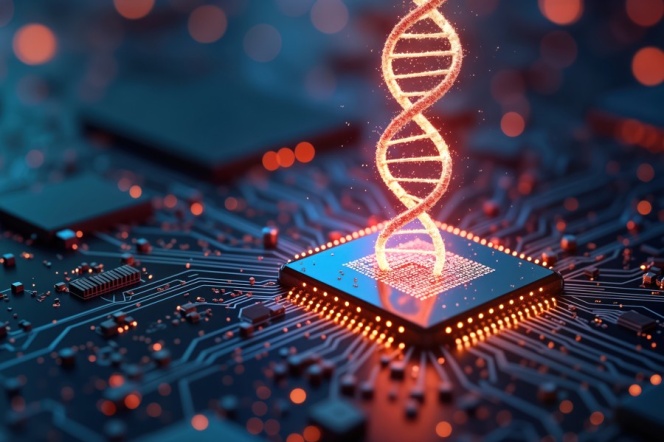Date added: 2025-06-04
When DNA Meets Artificial Intelligence

Their research, initially focused on the development of so-called “decision chromosomes,” “decision genes,” and “Decision DNA,” opened new avenues in the field of information processing. Today, through the convergence of biology, computer science, medicine, and artificial intelligence, the team addresses one of the most ambitious challenges in contemporary medicine: the automation of karyotype analysis.
What is a karyotype?
Karyotyping is a diagnostic technique used to evaluate the number and structure of chromosomes in a patient’s cells. It enables the detection of various genetic abnormalities—ranging from Down syndrome to cancer-related chromosomal changes. However, karyotype analysis is far from straightforward. Chromosomal images obtained from biological samples typically resemble tangled threads. To analyze them, they must first be “untangled and straightened.” Until recently, this task required laborious, time-consuming, and highly skilled manual work by laboratory technicians. This is now beginning to change.
A tangle of genes under a digital lens
A turning point for the research team took place during a conversation with a laboratory technician at a scientific conference. The technician described the difficulty of analyzing chromosomal images that could not be processed without extensive and time-consuming preparation, requiring years of experience. This encounter sparked a key idea: what if, instead of a human, a computer algorithm could interpret these images? Not just any algorithm, however, but a more unconventional tool—a Generative Adversarial Network (GAN). GANs are an advanced artificial intelligence technology that generates highly realistic images through the interaction of two competing models: a generator and a discriminator. These networks are capable of learning patterns and then generating new data based on what they have learned. In this case, the GAN learns to recognize what a “properly straightened chromosome” looks like and can autonomously produce a clarified image from an unreadable tangle.
“I’ve been fascinated by GANs for years—they are an extraordinarily intelligent architecture that can assist where humans may err or fall behind,” notes Professor Szczerbicki.
From bioinspiration to medical application
After more than two years of intensive research, the team presented their findings at a leading international conference on information processing, big data, and artificial intelligence—where their work was recognized with the prestigious Best Paper Award. The title of the award-winning paper captures its core idea, although in highly technical language: “Chromosome Straightening via Disentangled Representations Exploring Semantic Trajectories in GAN’s Latent Space.”
In simpler terms, the researchers are teaching a machine to “untangle and straighten” the genetic threads of chromosomes to enable faster and more accurate analysis. This work has the potential to significantly impact genetic diagnostics, cancer therapy, and even drug design.
Publications and future directions
Encouraged by their conference success, the team has submitted additional papers to leading scientific journals:
- Knowledge-Based Systems (Elsevier) – a top-tier journal in the field of knowledge-based systems (Impact Factor 7.2): “Multi-Scale Discriminative Representation Learning for Chromosome Classification with Small Datasets” (accepted for publication),
- IEEE Journal of Health Informatics – focusing on digital innovations in medicine (Impact Factor 6.7): “Bridging Local and Temporal Features for Chromosomal Structural Abnormality Detection” (under peer review).
These contributions mark only the beginning—laying a solid theoretical foundation with the prospect of translating findings into practical applications in the near future. As the researchers emphasize, further development in this area could signify a breakthrough not only in the automation of biological analyses but also in the creation of new information-processing paradigms—those inspired directly by the code of life.
Researchers and professionals interested in collaborating in the fields of bioinspired information systems, artificial intelligence in medical diagnostics, or GAN applications—whether in scientific research or practical implementation—are encouraged to contact Professor Edward Szczerbicki from the Faculty of Management and Economics at Gdańsk University of Technology.
Contact: edward.szczerbicki@zie.pg.gda.pl

